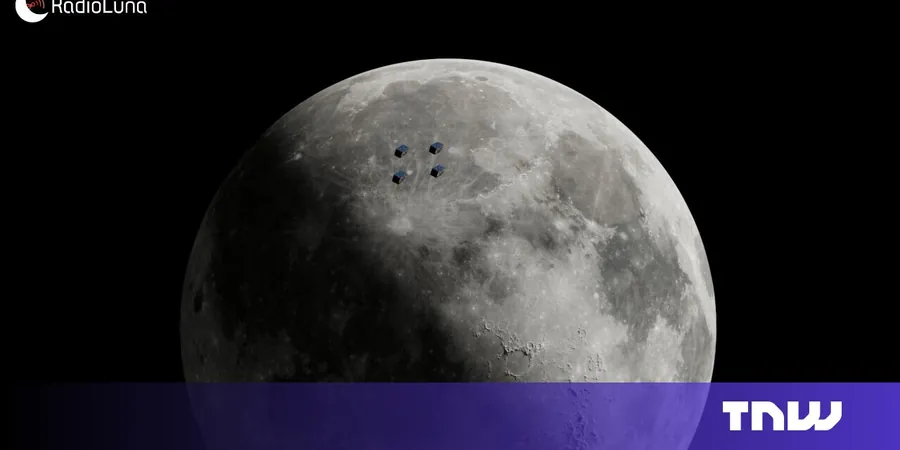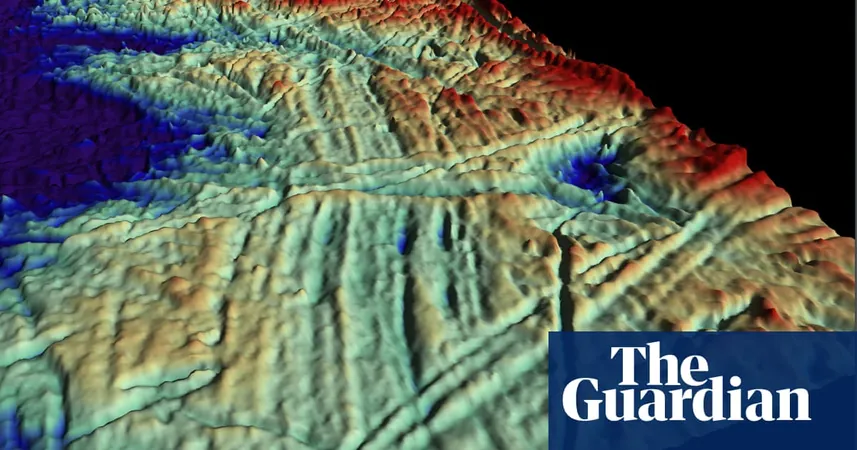
Innovative Cosmic Radio Station on the Moon's Far Side Could Unlock Secrets of the Early Universe
2025-04-08
Author: Siti
A groundbreaking initiative by a UK startup is set to redefine our understanding of cosmic history by establishing a radio station in orbit around the Moon. Blue Skies Space has recently partnered with the Italian Space Agency, embarking on an ambitious project to deploy a fleet of small satellites designed specifically to detect radio waves from the ancient universe.
This endeavor, named RadioLuna, aims to capture signals from the "cosmic dark ages," a mysterious period before the emergence of the first stars when the universe was predominantly filled with hydrogen gas. During this time, hydrogen atoms emitted radio waves at a frequency of 1420MHz—referred to as the hydrogen line. As these signals traveled through the vastness of space over 13 billion years, they were redshifted down into the FM radio band, landing between 88-108MHz.
One of the major challenges for scientists is that these ancient radio waves are nearly impossible to detect from Earth due to the overwhelming interference from our own radio communications. However, placing satellites on the Moon’s far side can mitigate this issue, allowing researchers to eliminate background noise and focus on the whispers of the early universe.
Blue Skies Space collaborates with the Italian Space Agency and space contractor OHB Italia to evaluate whether small, cost-effective CubeSats—constructed from readily available commercial components—can sustain and conduct legitimate scientific research in the lunar orbit. OHB Italia is tasked with the engineering and construction of these spacecraft.
The implications of successfully mapping these signals could be monumental, potentially revealing the transitional phase from the Big Bang to the formation of the first galaxies. It could fill crucial gaps in our knowledge of how the universe evolved from a homogeneous cloud of hydrogen to the rich tapestry of galaxies we observe today.
Dr. Marcell Tessenyi, CEO and co-founder of Blue Skies Space, expressed optimism about the project's feasibility. He stated, “Depending on the technical challenges, funding, and necessary infrastructure, we foresee the potential to deliver such a system within five years following our study's conclusion.”
RadioLuna isn't the only exciting project in the pipeline for Blue Skies Space. Later this month, the startup is set to launch its inaugural satellite, named Mauve. This satellite will be focused on gathering data on stars within the visible and ultraviolet spectrums. Interestingly, the data collected will be made accessible to scientists and researchers for a nominal membership fee, fostering collaboration and knowledge sharing in the astronomical community.
As humanity looks toward the stars, the RadioLuna project represents a leap forward in our pursuit of cosmic knowledge, adding another chapter to our understanding of the universe's intricacies. Stay tuned for more updates on this astronomical adventure!



 Brasil (PT)
Brasil (PT)
 Canada (EN)
Canada (EN)
 Chile (ES)
Chile (ES)
 Česko (CS)
Česko (CS)
 대한민국 (KO)
대한민국 (KO)
 España (ES)
España (ES)
 France (FR)
France (FR)
 Hong Kong (EN)
Hong Kong (EN)
 Italia (IT)
Italia (IT)
 日本 (JA)
日本 (JA)
 Magyarország (HU)
Magyarország (HU)
 Norge (NO)
Norge (NO)
 Polska (PL)
Polska (PL)
 Schweiz (DE)
Schweiz (DE)
 Singapore (EN)
Singapore (EN)
 Sverige (SV)
Sverige (SV)
 Suomi (FI)
Suomi (FI)
 Türkiye (TR)
Türkiye (TR)
 الإمارات العربية المتحدة (AR)
الإمارات العربية المتحدة (AR)